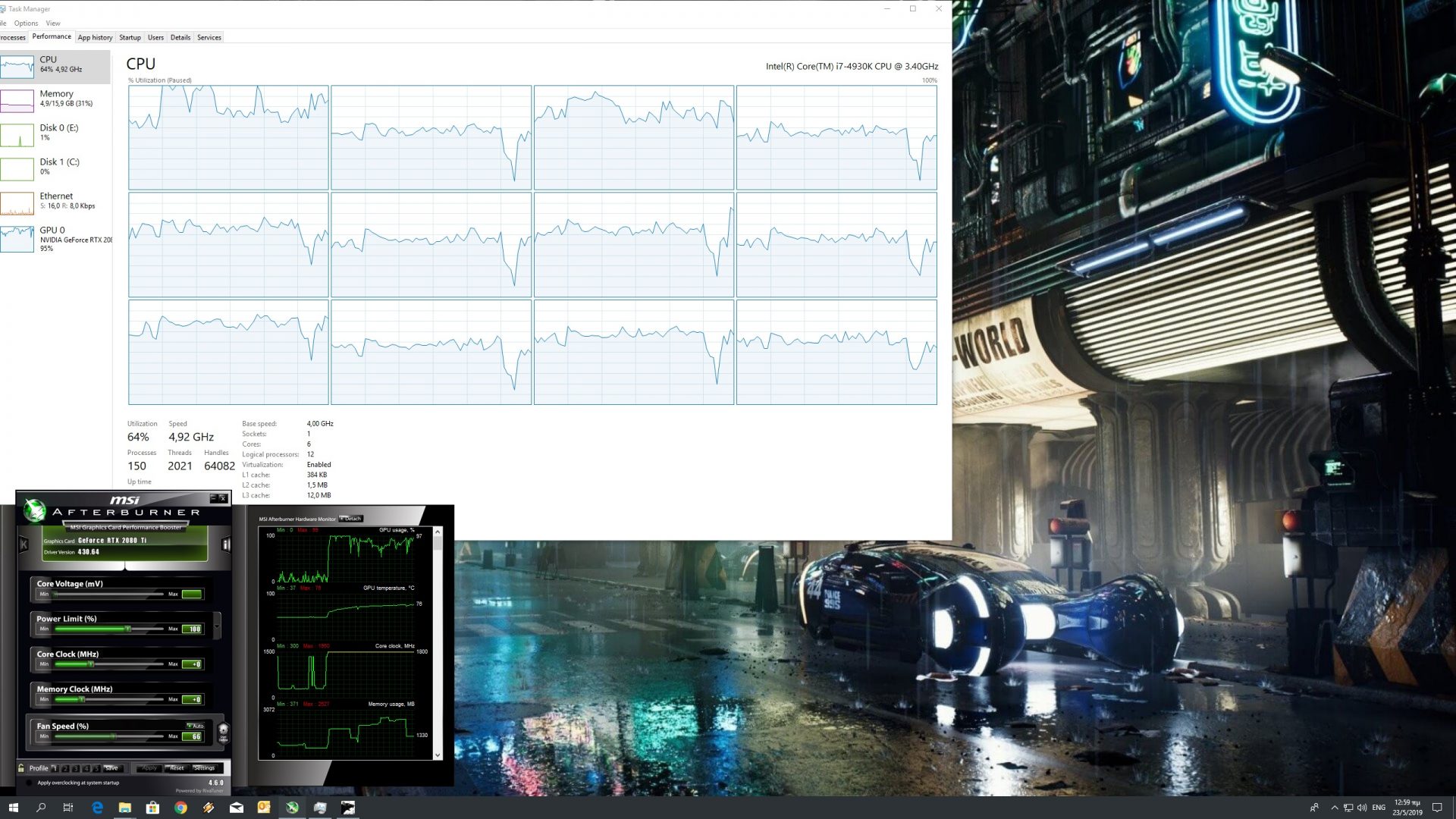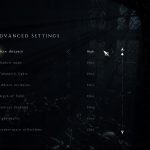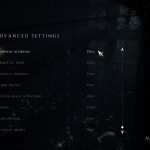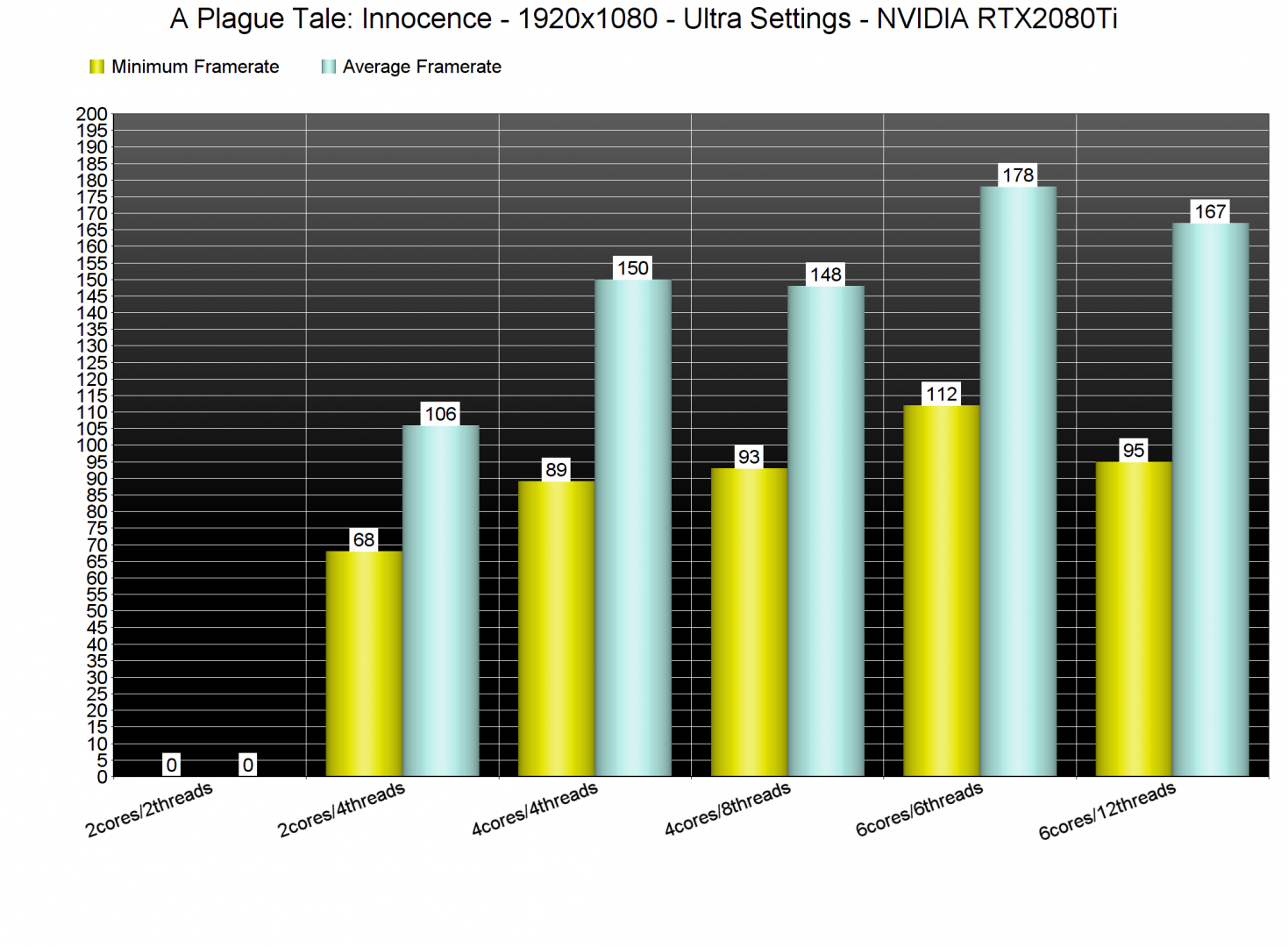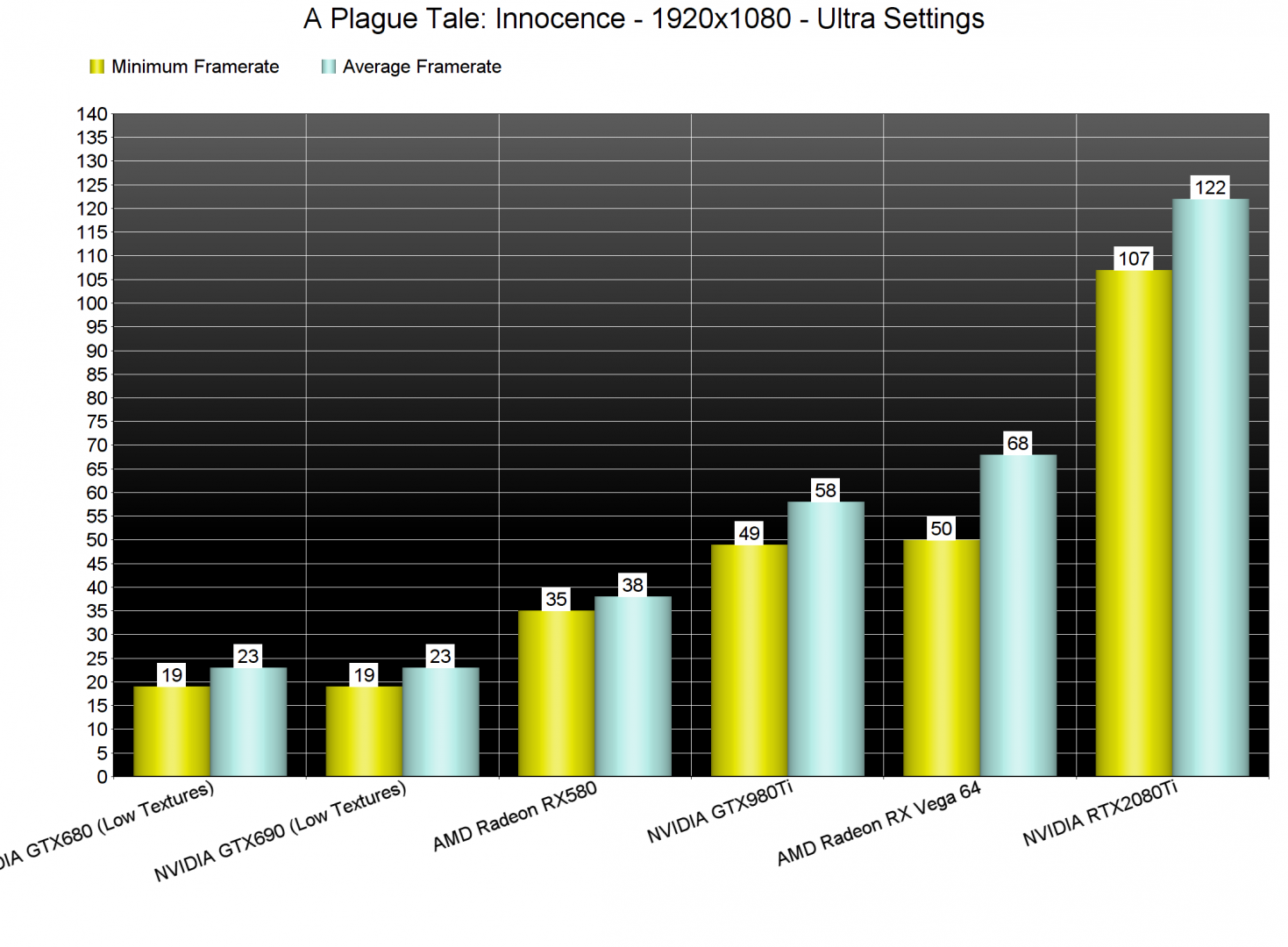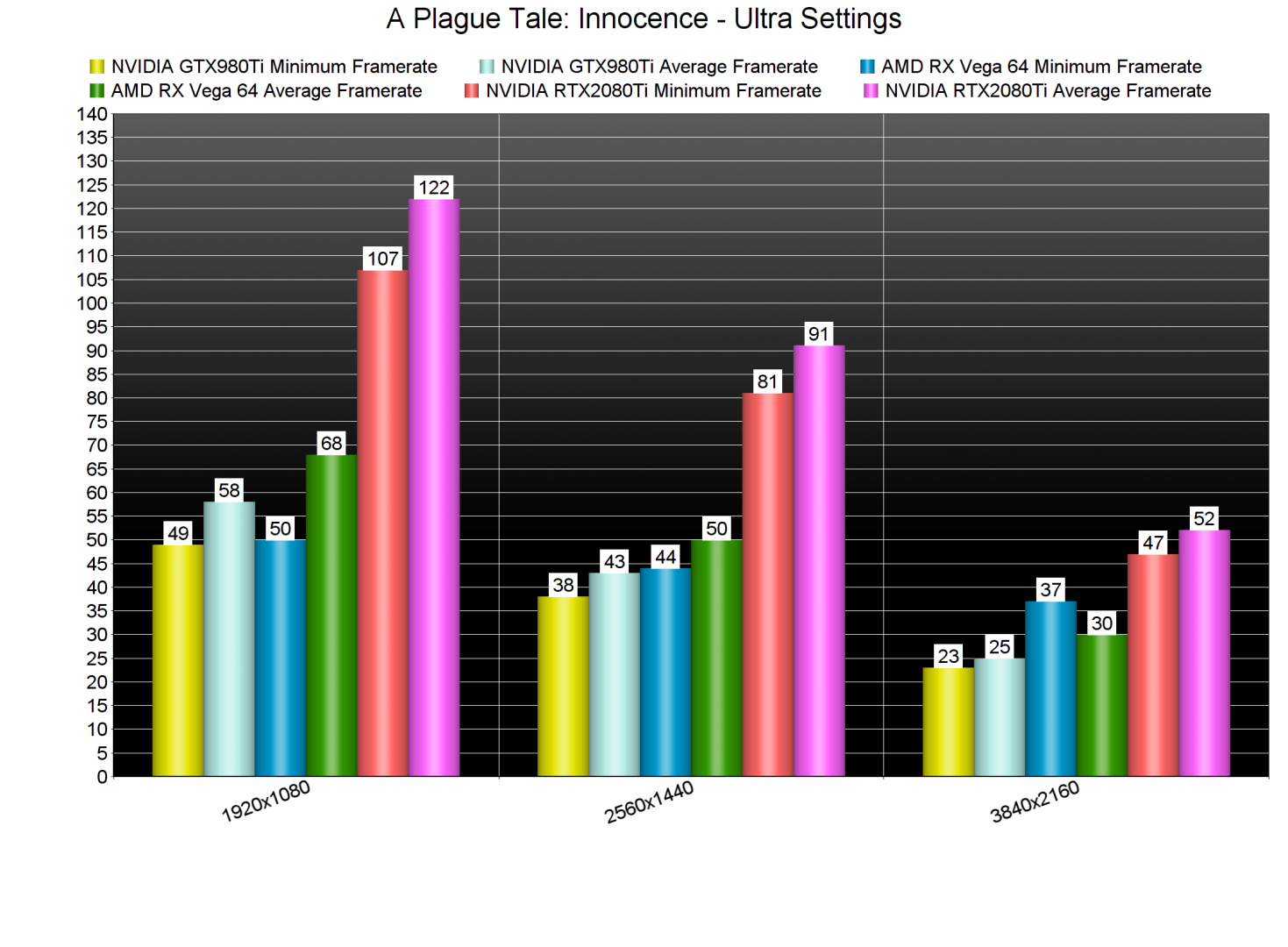A Plague Tale: Innocence is a new stealth adventure game developed by Asobo Studio that came out last week. The game is powered by an in-house engine, which also allows for over 5000 rats to be rendered onscreen at once, so it’s time now to benchmark it and see how it performs on the PC platform.
For this PC Performance Analysis, we used an Intel i7 4930K (overclocked at 4.2Ghz) with 16GB of DDR3 RAM at 2133Mhz, AMD’s Radeon RX580 and RX Vega 64, NVIDIA’s RTX 2080Ti, GTX980Ti and GTX690, Windows 10 64-bit, GeForce driver 430.64 and the Radeon Software Adrenalin 2019 Edition 19.5.1. NVIDIA has not included any SLI profile for this title, meaning that our GTX690 performed similarly to a single GTX680.
Asobo Studio has included a respectable amount of graphics settings to tweak. PC gamers can adjust the quality of Draw Distance, Shadow Maps, Volumetric Lights, Ambient Occlusion, Depth of Field, Contact Shadows, Light Shafts, Screen Space Reflections, Bloom, Anti-Aliasing and Textures. Unfortunately, there is no option to disable Chromatic Aberration, however you can disable it via the game’s .ini file (kudos to our reader Jono for bringing this to our attention). All you have to do is open “C:\Users\username\Documents\my games\A Plague Tale Innocence\enginesettings” and set “Fringe” to 0.
A Plague Tale: Innocence does not come with any in-game benchmark tool. As such, and in order to properly test the game, we used two benchmark scenes. The first one is the prologue forest area which was among the most GPU-heavy areas we found. The second was the first Castle area which featured numerous NPCs and was ideal for testing our CPU.
In order to find out how the game scales on multiple CPU threads, we simulated a dual-core and a quad-core CPU. Our simulated dual-core system was unable to run the game without Hyper Threading. With Hyper Threading enabled, it was able to push a minimum of 68fps and an average of 106fps at 1080p on Ultra settings.
Our six-core and simulated quad-core systems had no trouble at all running the game. However, we should mention some really annoying stuttering issues that currently plague this title (those stutters were the cause of the minimum framerates reported in our graphs). Moreover, and even though the game scaled on twelve threads, it ran faster on our six-core CPU when Hyper Threading was disabled.
A Plague Tale: Innocence can be easily described as a GPU-bound title. At 1080p and Ultra settings, even our NVIDIA GeForce RTX2080Ti was used to its fullest. In our GPU-heavy benchmark scene, our AMD Radeon RX Vega 64 was unable to offer a constant 60fps experience and our NVIDIA GeForce GTX980Ti was unable to offer a smooth experience. The only GPU that was able to push high framerates was our NVIDIA GeForce RTX2080Ti.
At 2560×1440, the only GPU that was able to offer a smooth gaming experience was our RTX2080Ti. As for 4K/Ultra, NVIDIA’s most powerful graphics card was unable to run GPU-heavy benchmark scene with 60fps. As said, we used a really GPU intensive scene so consider this as a stress test (meaning that other areas will run faster). For owners of a RTX2080Ti GPU, we strongly suggest using a custom 3325×1871 resolution in order to get a 60fps experience on Ultra settings.
Graphics wise, A Plague Tale: Innocence is one of the most beautiful games out there. Asobo Studio has used photogrammetry and as a result of that, the in-game textures look really detailed. There are also some cool lighting effects (especially when you are indoors) and the lighting system is really great. Most characters are also highly detailed, though the lip-syncing is a bit average-ish and sometimes the transition between various animations is not that smoothly. Other than that though, A Plague Tale: Innocence looks gorgeous so kudos to Asobo Studio for creating such a beautiful game.
All in all, A Plague Tale: Innocence performs well on the PC, though it does require a high-end graphics card for playing on Ultra settings. Thankfully, the game has a respectable number of graphics settings to tweak and it does not require a high-end CPU, meaning that it can run on a variety of PC configurations. Naturally, it also displays proper on-screen K&M indicators and we did not experience any mouse acceleration or smoothing issues. The only technical issue that we could find was the really annoying stutters that occur when you explore the environments (they usually happen when the game loads a new section of the environment/area), so here is hoping that Asobo will address them via a post-launch update.
Enjoy!

John is the founder and Editor in Chief at DSOGaming. He is a PC gaming fan and highly supports the modding and indie communities. Before creating DSOGaming, John worked on numerous gaming websites. While he is a die-hard PC gamer, his gaming roots can be found on consoles. John loved – and still does – the 16-bit consoles, and considers SNES to be one of the best consoles. Still, the PC platform won him over consoles. That was mainly due to 3DFX and its iconic dedicated 3D accelerator graphics card, Voodoo 2. John has also written a higher degree thesis on the “The Evolution of PC graphics cards.”
Contact: Email


